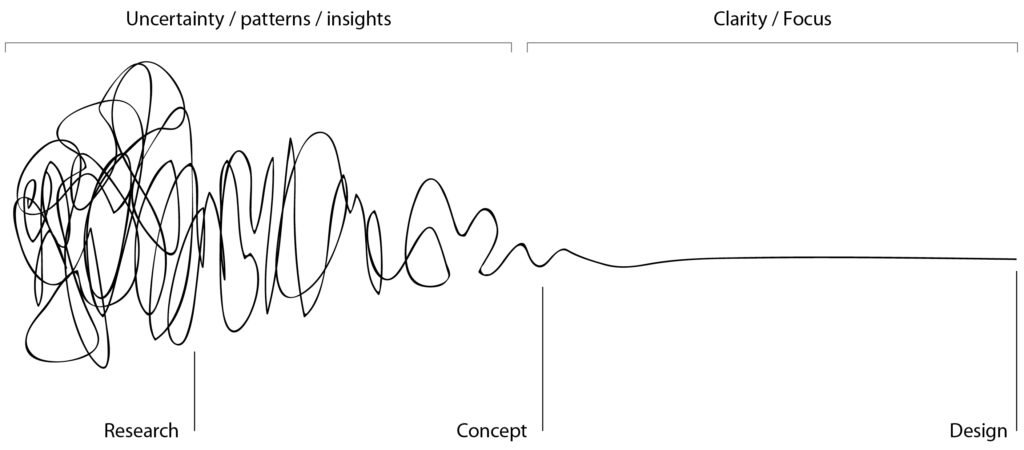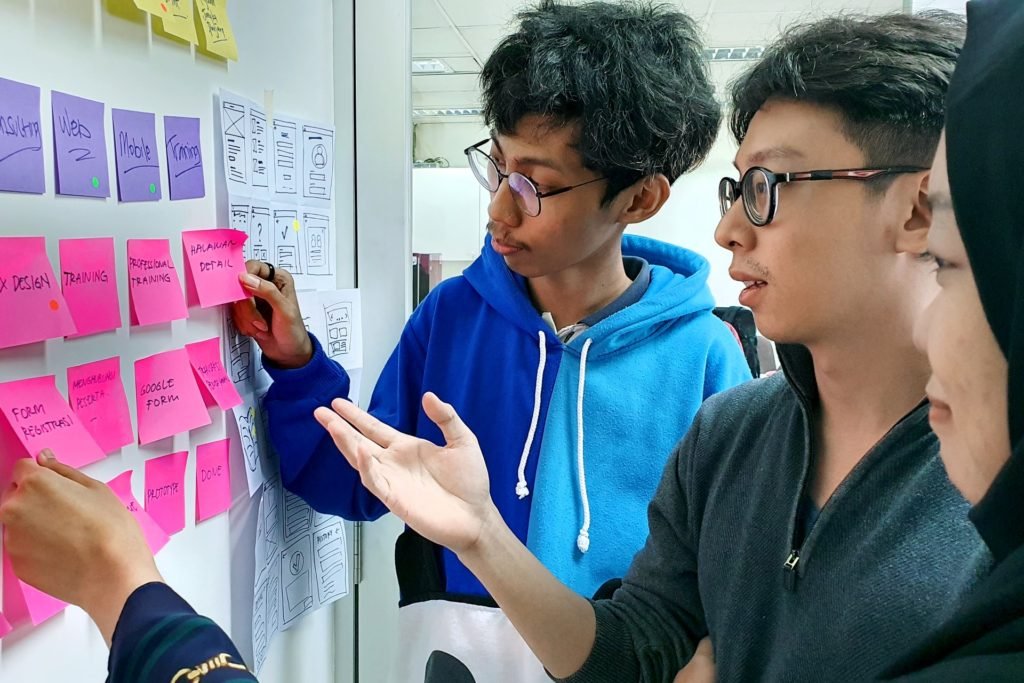
Business model design process for social enterprises
Steps and activities to get your BM right
Whether you are running a social enterprise or planning to launch a new one, coming up with a solid business model (BM) is never an easy task. Even more difficult is turning a first, rough business model idea into something practical and tangible. So, to help you navigate through these uncertainties, we will discuss the different steps of the business model design process for social enterprises.
Business model design process: an overview
Probably you’ve heard before about the “design squiggle“. This illustration is indeed often used to capture the complexity of design processes of all kinds.

As you might guess, BM design is a messy, iterative process too. As a matter of fact, practitioners usually face the same degree of uncertainty, ambiguity and unpredictability when designing new or innovative business models. In 2010, Osterwalder and Pigneur identified the key stages of a typical BM design process. Ever since then, other authors and scholars provided alternative interpretations that are all equally valuable.
At Impact Jungle, we combined their different views and came up with a 6-phase design process, specifically meant for social enterprises. Even thought the phases are described in a linear way, please remember that the whole process is actually iterative by nature. Let’s now dig into it a bit more!
1. “Mobilize” Phase
The first phase is all about setting up the stage for a successful design process. It’s indeed crucial to create the right pre-conditions to do it right. And by “pre-condition” we mean key elements such as common understanding of the design process, agreed tools/languages to use, clearly defined roles and responsibilities within the team, etc. If all these elements are not properly set up, the process might immediately turn into a long, uphill journey.
2. “Research” Phase
During this step, team’s members usually immerse themselves in the field and collect information to gain deeper understanding of the market. For instance, this is the moment to further investigate the social problem tackled, or to analyze dominant business models in the industry. Also, it is the right time to study benchmarks, competitors, as well as the most relevant trends that may impact the business. Of course these are just few examples, as the list could go on and on from time to time.

3. “Ideation” Phase
Often called the “creativity” phase, this is when the true magic begins to happen. In fact, once collectively defined a social impact mission to pursue, the team brainstorms over key insights, information and feedback collected in order to turn first, rough ideas into business model prototypes. Here, the goal should be to identify different possible business models to operate. Thus, coming up with several BM prototypes might help not running short of alternatives. Notice that the most commonly used tool for this purpose is the Social Business Model Canvas, which you’ve probably already heard about.
4. “Testing” Phase
“Designing an innovative BM is one thing, testing if it’s going to work out is a radically different one“. During this phase, the team indeed uncovers underlying assumptions of the prototypes previously designed and runs experiments to test them. The assumptions might relate to any aspect of the BM, including value proposition, revenue model, but also growth engines. Once conducted stress-tests and experiments to validate/reject the assumptions, the team then evaluates the results. Eventually, the business model prototypes could get redefined accordingly, in order to end up selecting the most promising one.
5. “Implementation” Phase
At this stage, the team brings the desired business model to the field. In other words, there is a shift from abstract strategy to concrete actions. Tools like the BM Roadmap might be used to plan ahead the actions needed to implement a new business model.

6. “Management” Phase
Once implemented the BM, the team ultimately sets up the management structures to continuously monitor/evaluate it. As a matter of fact, it’s important to analyze how the business (and new BM) is performing and how the market is reacting to it. From there, further improvements or adjustments get implemented coherently, until new, radical business model innovations might become necessary once again!
Conclusion
In this article, we introduced you to the business model design process for social enterprises. As seen, the process is comprised of 6 different stages: (1) mobilization, (2) research, (3) ideation, (4) testing, (5) implementation and finally (6) management.
We believe aspiring changemakers can hugely benefit from having a clear understanding of this framework. In fact, they’ll need to master every single one of those steps in order for their social enterprises to become (and remain) successful.
But what about you? Do you think you have all it takes to run a BM design process effectively? Drop us a message in the comment section and let us know what stage you’re in! 🙂
Did you like this article?
If so, then don’t forget to check out for more at Impact Jungle.
